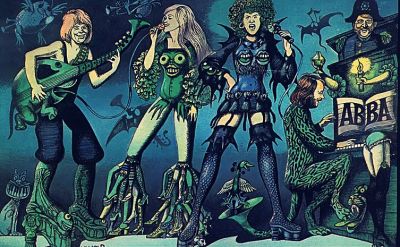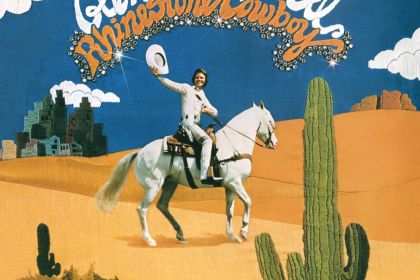SONGWRITER
Hasta Mañana: the origins of the best ABBA ballad

ABBA Greatest Hits LP cover
Hasta Mañana, an ABBA ballad released on their 1974 Waterloo album never quite managed to reach the top of international charts but is nonetheless included in most band compilations, including Greatest Hits and The Best Of ABBA.
The song was originally intended for the Eurovision Song Contest and was subsequently replaced by Waterloo featuring the lead vocals of both ABBA's female singers Agnetha Fältskog and Anni-Frid Lyngstad which followed the band's promotion concept more closely.
Hasta Mañana is credited to the ABBA members Benny Andersson and Björn Ulvaeus as well as their manager Stig Anderson who scribbled the final version of the lyrics. It is reported that a draft recording was handed over to Stig to compose the lyrics before he left on vacation in the Canary Islands, where he snatched that catchy phrase "hasta mañana" (meaning "see you tomorrow" in Spanish) while listening to a radio broadcast.
Listen to Hasta Manana by ABBA:
Compositionally, Hasta Mañana exhibits well-developed chord progressions and an overall thoughtful structure quite typical of the song form found in classical music. In the harmonic analysis of the verses' chord chains, the scale degrees (denoted with Roman numerals) show the following progressions in the key of F major:
- F–Am–B♭–C or I–iii–IV–V
- F–Am–B♭–D7→Gm or I–iii–IV–V7/ii→ii
- Gm–B♭m or ii–iv
- Gm–G7→C7 or ii–V7/V→V7
The first line ends with the authentic half cadence, while the second line shows tonicization of the second scale degree by means of the D7 secondary chord which introduces the Gm supertonic triad as the temporal tonic chord. The fourth line reveals another example of tonicization, this time of the fifth scale performed by the G7 chord, often referred to as a double dominant chord. In the third, the Ionian mode deviates into the harmonic major through the introduction of the B♭m minor subdominant triad.
In the harmonic progressions accompanying the choruses, tonicization of the second scale degree occurs three times, while the harmonic major scale is introduced in a very euphonious way, with the B♭m minor subdominant triad immediately following the B♭ major subdominant chord:
- F–Am–Dm–D7→Gm or I–iii–VI–V7/ii→ii
- C–Gm–C or V–ii–V
- F–Am–D→Gm or I–iii–V/ii→ii
- B♭–B♭m–F–D7→Gm–C–F or IV–iv–I–V7/ii→ii–V–I.
The already complex harmonic structure of Hasta Mañana is further developed in the finale when the last stanza of the chorus is modulated into the key of F♯ major, here introduced by the dominant C♯7 chord.
In terms of musical form, the verses, as well as choruses, follow the binary form which is the common technique of songwriting in classical music.
Discover more songs composed in Ionian major mode and check out their harmonic analysis in the following articles:
- 6 songs to unpack Ionian mode and the major scale
- 9 Beatles songs that combine harmonic major with Ionian mode
- Seven Seas of Rhye: song of imaginary land brought to life by Ionian and Mixolydian modes
- Lawdy Miss Clawdy: how Lloyd Price's first hit mixes blues and classics
- Sugaree: Jerry Garcia's song referencing his lyricist's criminal past
- D'yer Mak'er: meaning of Led Zeppelin's most controversial song
- Tumbling Dice: hundred reels of tape for a messy Rolling Stones mix
- Marie Laveau: ballad of the legendary Voodoo Queen
- Statesboro Blues: no one can sing the blues like Blind Willie McTell



